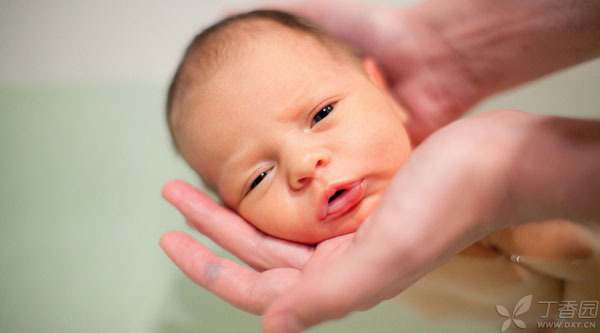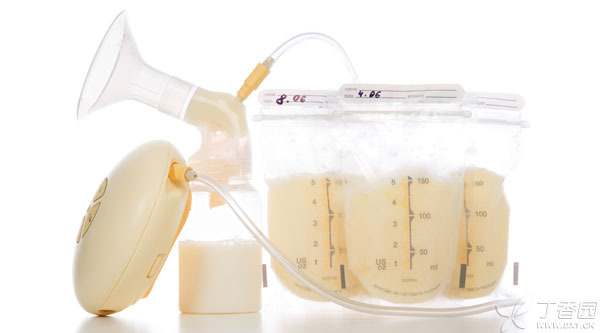When the baby was born, the new parents were eager to hold their baby all the time and looked at the baby’s face carefully, only to find out how the baby’s face looked yellow and waxed. This condition is medically called jaundice.
At this time, many people of the older generation will say, “Stop breast milk quickly!” Just stop], even some doctors will directly say: “stop breast milk”…
Many mothers hope to insist on breast-feeding, so does this breast-feeding stop or not?
Where does jaundice come from?

Jaundice is the yellowing of skin, mucosa and sclera (i.e. White eyes) due to the increase of bilirubin content in blood, which can cause bilirubin encephalopathy and nervous system dysfunction in severe cases.
About 85% of newborns will have temporary jaundice, most of which are physiological, due to:
First, neonatal bilirubin production is relatively high; Second, the function of bilirubin metabolism in newborn liver is slightly weak, and bilirubin cannot be well metabolized, resulting in jaundice visible to the naked eye in about 60% of full-term infants and 80% of premature infants. If other disease causes are excluded, it is the so-called [physiological jaundice], which is a normal phenomenon. There are also some newborns with jaundice caused by other reasons, such as hemolysis, infection, fever and other disease factors. This jaundice is called pathological jaundice.
Why does drinking breast milk lead to jaundice?
In fact, in neonatal jaundice, there are two kinds of jaundice related to breast-feeding: jaundice related to breast-feeding and breast-feeding jaundice, which have differences in occurrence mechanism, occurrence time and treatment methods.
1. Breastfeeding-related jaundice, Also known as [early onset breast milk jaundice], It refers to jaundice related to feeding and lifestyle. It usually occurs within one week after the newborn is born, Due to improper feeding posture and other reasons, insufficient breast milk intake leads to reduced intestinal peristalsis and delayed meconium excretion of newborns, resulting in reduced bilirubin excretion and increased absorption, resulting in increased serum bilirubin. This situation can be seen in about 13% of breast-fed infants. The solution is to increase the amount of breast-fed as much as possible.
2. Another kind of jaundice, called breast milk jaundice, is jaundice related to breast milk itself. It usually occurs one week after birth and gradually fades yellow in the second or third week. However, bilirubin level will still last for one month or more at a certain low level. About 2% of breast-fed infants will have this kind of situation.
In general, children with mild breast-milk jaundice are usually normal in mental state, diet and sleep. In addition, the diagnosis of breast-milk jaundice is usually established only after the doctor has ruled out other conditions, which is an exclusionary diagnosis.
The mechanism of breast milk jaundice has not been fully understood. At present, the mainstream view holds that the [culprit] of breast milk jaundice is that-glucuronic acid anhydrase in breast milk affects bilirubin metabolism, which includes two aspects: increasing intestinal reabsorption of bilirubin and inhibiting the activity of some enzymes that metabolize bilirubin in liver.
Although in essence, breast-feeding-related jaundice and breast-milk jaundice belong to pathological jaundice, they are different from pathological jaundice induced by other physical and chemical factors, including occurrence time, severity, whether there are other accompanying symptoms, etc.
Do you want to stop breast milk?
According to the “Expert Consensus on Diagnosis and Treatment of Neonatal Hyperbilirubinemia” issued by the Chinese Medical Association in October 2014, it is recommended to deal with the confirmed breast milk jaundice (jaundice related to breast milk itself) as follows:
(1) If TSB (serum total bilirubin) < 257mol/L (15 mg/dl), breast feeding can continue;
(2) When TSB > 257mol/L (15 mg/dl), breast feeding can be suspended for 3 days and artificial feeding can be changed;
(3) When TSB > 342mol/L (20 mg/dl), phototherapy is added. At this time, the suspension of breast milk or even phototherapy is to reduce bilirubin content so as to avoid adverse consequences caused by hyperbilirubinemia.
Therefore, if the diagnosis is breast milk jaundice, whether it is necessary to stop breast milk should be determined by measuring the serum total bilirubin content through peripheral venous blood. When necessary, venous blood should be drawn, and children should not be blindly distressed.
For the diagnosis of breast-feeding related jaundice, do not need to stop breast milk, on the contrary, should increase the number of feeding, at the same time learn the correct posture and breast-feeding methods, accelerate bilirubin excretion, so that the baby will return yellow as soon as possible. Generally, after increasing the amount and frequency of breast-feeding, it will be relieved and bilirubin encephalopathy will not occur.
Is there a small folk prescription for returning yellow?

During the period of stopping breast milk, the mother should suck out the milk with a breast pump to ensure that the milk secretion does not decrease. When the baby’s bilirubin drops to a certain level, breast feeding can be resumed immediately.
In addition, some folk remedies such as feeding glucose water, plain boiled water or using [Yinzhihuang] are not needed. The water needed by infants under 6 months old is enough in their breast milk. Feeding glucose water is also related to the increase of bilirubin, partly because it reduces breast milk intake. Regarding [Yinzhihuang], neither the 2009 edition of [Expert Consensus on Diagnosis and Treatment Principles of Neonatal Jaundice] nor the 2014 edition of [Expert Consensus on Diagnosis and Treatment of Neonatal Hyperbilirubinemia] has been mentioned in the treatment part.
In short, breast milk jaundice is an excluded diagnosis, that is, it can only be diagnosed after excluding other causes that may cause baby jaundice. When the baby has jaundice, the preferred measure should be to go to the hospital for medical treatment, and the professional pediatrician should judge the type of jaundice. If there are pathological factors, it should be treated according to the etiology. If it is determined that it is breast milk jaundice, then targeted treatment will be carried out. At this time, breast milk, stop or stop? It still depends on the serum total bilirubin content.
